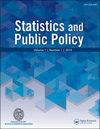Mathematical Analysis of Redistricting in Utah
IF 1.5
Q2 SOCIAL SCIENCES, MATHEMATICAL METHODS
引用次数: 1
Abstract
Abstract We discuss difficulties of evaluating partisan gerrymandering in the congressional districts in Utah and the failure of many common metrics in Utah. We explain why the Republican vote share in the least-Republican district (LRVS) is a good indicator of the advantage or disadvantage each party has in the Utah congressional districts. Although the LRVS only makes sense in settings with at most one competitive district, in that setting it directly captures the extent to which a given redistricting plan gives advantage or disadvantage to the Republican and Democratic parties. We use the LRVS to evaluate the most common measures of partisan gerrymandering in the context of Utah’s 2011 congressional districts. We do this by generating large ensembles of alternative redistricting plans using Markov chain Monte Carlo methods. We also discuss the implications of this new metric and our results on the question of whether the 2011 Utah congressional plan was gerrymandered.犹他州选区重划的数学分析
摘要:我们讨论了评估犹他州国会选区党派不公正划分的困难以及犹他州许多常见指标的失败。我们解释了为什么共和党在最少共和党选区(LRVS)的投票份额是每个政党在犹他州国会选区的优势或劣势的一个很好的指标。虽然LRVS只在最多一个竞争性选区的情况下才有意义,但在这种情况下,它直接反映了一个给定的重新划分计划对共和党和民主党有利或不利的程度。我们使用LRVS在犹他州2011年国会选区的背景下评估党派不公正划分的最常见措施。我们通过使用马尔可夫链蒙特卡罗方法生成备选重划计划的大集合来实现这一点。我们还讨论了这个新指标的含义,以及我们对2011年犹他州国会计划是否存在不公正划分的问题的研究结果。
本文章由计算机程序翻译,如有差异,请以英文原文为准。
求助全文
约1分钟内获得全文
求助全文
来源期刊

Statistics and Public Policy
SOCIAL SCIENCES, MATHEMATICAL METHODS-
CiteScore
3.20
自引率
6.20%
发文量
13
审稿时长
32 weeks
 求助内容:
求助内容: 应助结果提醒方式:
应助结果提醒方式:


